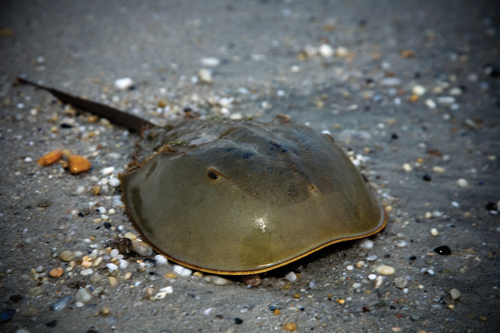Tri-Spine Crab Now on Endangered List

What the Decline in T. tridentatus Means for our Industry
Longtime LAL researcher James Cooper offers his insights into the decline of an Asian species of horseshoe crab and the impact on the market for LAL.
Recently, the International Union for Conservation of Nature (IUCN) added Tachypleus tridentatus, the tri-spine or Chinese horseshoe crab, to its list of endangered species (1). IUCN reports that abundance of T. tridentatus is falling sharply in the South China Sea and other Asian waters, where it ranges from southern Japan to Indonesia (1). This decline is primarily caused by habitat loss, overfishing for human consumption and production of tachypleus amebocyte lysate (TAL).
In the absence of regulatory policy to return TAL crabs to the sea, they are subject to human consumption and production of chitin. No spawning was observed in a recent survey of 27 nationally known spawning sites. Overharvesting results in 100% mortality (2). Continued fishing threats are not considered reversible in China and Vietnam (1).
TAL is produced by eight firms in China and sold primarily as single-test vials. These firms produce about 15% of the amebocyte lysate global market. Naturally, they will turn to limulus amebocyte lysate (LAL) as the horseshoe crab population is exhausted in the Chinese region. There are plans to help these users conduct endotoxin testing with more efficient use of LAL. New firms seeking to bleed Limulus for non-FDA regulated LAL production will be subject to strict use and possession regulations of member states of the Atlantic States Marine Resources Commission (ASMFC), the federal Commission that oversees conservation of marine resources such as Limulus polyphemus, the American horseshoe crab.
The ASMFC reports in their Horseshoe Crab Stock Assessment that LAL production has no detrimental impact on HSC sustainability or availability of horseshoe crab eggs for migratory shorebirds in Delaware Bay (3). Marine biologists agree that use of horseshoe crabs as bait for eel and whelk, habitat loss and bycatch destruction are the most damaging threats. The Assessment signifies that no threats exist that necessitate either discontinuation of LAL production or the use of alternatives methods.
The endangered status of T. tridentatus is a vivid reminder that a similar fate would have befallen limulus were it not for the protection that LAL provides. Limulus stock has been subject to exploitation for fertilizer and livestock feed in the past and currently for marine eel and whelk baiting, where crabs are sectioned and placed in traps. About 700,000 horseshoe crabs are harvested annually from coastal waters for the bait fishery. From the outset, early LAL researchers adopted a return-to-sea policy, influencing the U.S. FDA to make catch-and-release a condition for FDA licensure of LAL in 1973.
The global lysate market is about $400 million. Lysate firms have the essential responsibility of providing over 70 million test units annually for assuring the safety of parenteral products. HSC are collected by hand harvest or by trawling. About equal numbers of male and female are collected for LAL and returned to sea after use.
Mortality does not occur during the LAL-related bleeding process of donor crabs, which is analogous to human blood donation. A 1983 study of the long-term impact of bleeding on a large number of crabs in a Florida bay estimated that bleeding increased the risk of mortality by about 10% (4). The Stock Assessment considers this number trivial in comparison to other threats, such as baiting, habitat loss and predators.
The public was generally unaware of horseshoe crabs until they learned about the value of their blood to healthcare. Currently, thousands of people volunteer their time for tagging studies and spawning surveys each spring along designated beaches to become part of citizen science events that heighten their awareness of horseshoe crabs and their important ecological relationships (5). Horseshoe crab numbers are increasing in mid-Atlantic, southern states and Delaware Bay (3). Yet numbers are not stable in areas where bait fishing for eel and whelk remains allowed. The collection of horseshoe crabs for bait was banned in 1991 in South Carolina and in 2006 in New Jersey. Horseshoe crabs thrive where LAL.
In summary, the conservation practices of the LAL industry and ASMFC have secured the future of the American horseshoe crab. Unless similar practices are enacted, T. tridentatus has a less promising future.
References
- IUCN 2019. IUCN List of Threatened Species: Tri-spine horseshoe crab Tachypleus tridentatus.
- Global Revenue for Amebocyte Lysate—2016 World Market, QY Research Group
- Atlantic States Marine Resources Commission. 2019. ASMFC Stock Assessment Overview: Horseshoe crab.
- Rudloe, A. “The effect of heavy bleeding on mortality of the horseshoe crab, Limulus polyphemus, in the natural environment.” Journal of Invertebrate Pathology 42 (1983):167–76.
- Swan, B. “Migrations of adult horseshoe crabs Limulus polyphemus, in the middle atlantic bight: 1 17-year tagging study.” Esturaries 25 (2005):28–40.



